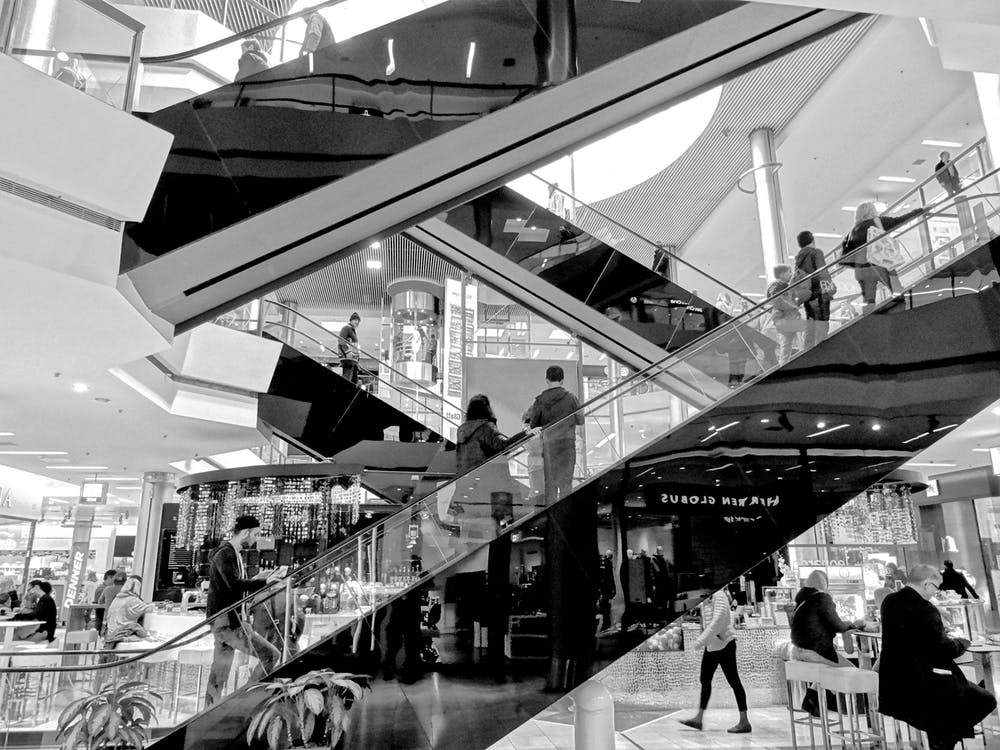I have a somewhat morbid fixation with shopping malls. Which is to say, I love to hate them. I enjoy looking at eerie pictures of abandoned malls, poking fun at the mindless consumerism that takes place therein, and smugly reading articles that—correctly—point out that malls are ruthlessly ugly and mathematically inefficient uses of urban space.
The theme of the death of the mall, so associated in our minds now with a bygone era, can be in certain circles a sort of truism. That the malls will all be gone soon is not an assertion likely to ruffle feathers or elicit demands for evidence at a cocktail party or an academic conference, and yet there’s a problem: it’s not true.
This all struck me last weekend when, desperate for a place to take my toddler that was warm and indoors, I realized that the nearest free communal space for kids to play amidst a Chicago winter was in fact a nearby shopping mall.
Contrary to all expectations, it was absolutely packed. I didn’t see a single empty storefront. The food court—presided over by a statue of the Virgin of Guadalupe courtesy of a popular tamale stand—was thriving. Despite being awkwardly located directly across from Victoria’s Secret, the kids play area was positively teeming with children scrambling over plastic animals and shouting “DAD, WATCH ME DO THIS!”
Now if you’re a seasoned veteran of mall studies, you’ll quickly say that the story of our time isn’t quite that all malls are dying out, it’s that most of them are dying. The remaining ones, almost exclusively catering to an elite clientele in well-to-do suburbs, are becoming even more massive and more upscale. The King of Prussia Mall in the western suburbs of Philly, which I visited twice in four years living in the general vicinity, is the largest in the country by square footage and showing no signs of slowing down. Think places anchored by Neiman Marcus and Nordstrom’s, not Sears or JCPenney.
But my local mall isn’t that at all. Standing near the juncture of a very densely populated majority Hispanic suburb, a town that is one-third African American, and a number of smaller municipalities all of which are about equally working class, I saw enough real diversity in an hour to make an Oberlin admissions counselor salivate.
A number of factors explain this mall’s continued existence.
First, the nearby communities are the early suburbs of the 1920s, built with compact bungalow houses on small lots. This high density means that the available market within just a few miles of the mall is extraordinarily large. It helps, too, that the local population is majority minority and working class, which means that the area is mostly devoid of Amazon Prime-subscribing DINKS and hipsters too self-conscious about their own authenticity to be caught dead in a suburban mall.
Don’t get me wrong. I have no desire at all to return to this place any time soon. But it really hit me that merely by being present in this mall and observing the plain fact of its ongoing success, I had to moderate my assumptions about the fate of malls writ large.
Why is this mall succeeding? Heck, why are any malls still succeeding? Before answering that question we should ask what the appeal of the mall was in the first place. More on that in part two next week (just in time for Black Friday).







3 thoughts on “Death of the Shopping Mall, Part I: The Trend That Isn’t”